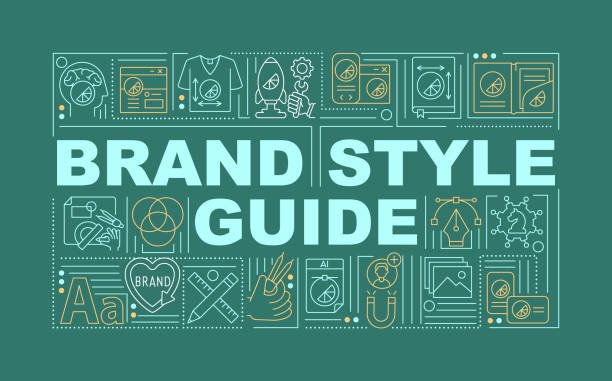A strong and consistent brand identity is essential for any business aiming to build trust, recognition, and lasting relationships with its audience. A well-crafted brand style guide is the roadmap that helps every team member and external partner understand how to represent the brand visually and verbally.
This comprehensive guide will walk you through what a brand style guide is, why it matters, and how you can create one that resonates with your audience. For more expert advice on branding strategies, visit Mova Consulting.
In this blog, we will dive into the following sections: an in-depth look at what a brand style guide is, why it is important for a business, the key elements that should be included, the steps to create one, a detailed template to guide you, and final thoughts on how to leverage your branding for long-term success.
What Is a Brand Style Guide?
A brand style guide, often referred to as brand guidelines, branding guide, or even a brand identity guide, is a document that clearly outlines how a brand should be represented. It covers everything from your logo and color palette to typography, imagery, tone of voice, and overall messaging. The goal is to create a cohesive identity that can be recognized across all mediums.
A well-prepared brand style guide serves several purposes. First, it offers clarity. By laying out detailed instructions and examples, it ensures that designers, marketers, and any third-party agencies are on the same page.
This reduces the risk of inconsistent designs or messaging that could confuse customers. In many ways, it is the visual and verbal bible of your brand.
A comprehensive guide goes beyond listing the elements; it explains the rationale behind each choice. For example, why certain colors were selected and how they evoke specific emotions. It outlines how your logo should be treated, including spacing, scaling, and placement.
This level of detail ensures that anyone representing your brand can do so accurately, whether they are creating marketing collateral, social media content, or even packaging.
Consider these additional aspects in your brand style guide:
- History and evolution of your brand identity: Explain how your brand has grown and how its visual identity has been refined over time.
- Usage examples: Provide clear, side-by-side examples of both proper and improper usage of logos, colors, fonts, and images.
- Rationale for decisions: Share insights into why specific design choices were made. This might include research on target demographics or industry trends.
- Adaptability guidelines: Discuss how the guide applies across different mediums, such as digital platforms, print materials, and environmental branding.
Another important aspect is the integration of tone and language. Your brand style guide should articulate your brand’s personality. Whether your voice is professional and authoritative or friendly and conversational, consistency in communication helps reinforce your brand’s identity. It should cover key messaging points, style preferences, and even sample copy to serve as reference for content creators.
The detailed explanation provided in your style guide fosters a culture of consistency and quality. When every stakeholder understands the guidelines, the end product is a polished and uniform representation of your brand that stands out in a crowded market.
Ultimately, a well-developed brand style guide is not only a tool for creative alignment but also a strategic asset that enhances the overall perception of your business.
Why Is a Brand Style Guide Important?
A brand style guide is much more than a design manual—it is a strategic tool that influences every aspect of your brand’s public image. One of the primary reasons a brand style guide is crucial is its role in ensuring consistency.
When every touchpoint from your website to social media and print materials reflects the same visual and verbal identity, your audience receives a unified message. Consistency breeds familiarity, and familiarity builds trust.
Imagine a scenario where different parts of your organization create conflicting versions of your brand. One team might use a slightly different shade of your primary color, another might choose a different font for headlines, and yet another might use varying taglines.
Such inconsistencies can dilute your brand message, confuse your customers, and weaken brand recognition. A well-defined style guide prevents this by providing clear instructions and examples that every stakeholder can follow.
Beyond internal consistency, a brand style guide also acts as a tool for external partnerships. When you work with agencies, freelancers, or any external collaborators, having a documented set of standards minimizes misinterpretation and ensures your brand is represented correctly no matter who is working on it.
This uniformity is essential when scaling your brand, especially if you’re entering new markets or expanding your product lines.
Here are additional reasons why a brand style guide is important:
- Brand Equity: Over time, consistent application of your brand’s visual and verbal elements helps build strong brand equity. Customers begin to associate certain colors, fonts, and styles with your company, making your brand instantly recognizable.
- Efficiency and Clarity: A comprehensive guide reduces the time spent on decisions regarding design and messaging. Instead of debating over which color or font to use for a new campaign, team members can refer directly to the style guide. This streamlining allows for faster execution and more efficient collaboration.
- Quality Control: Maintaining quality across all communications is critical. A style guide provides a reference point that can be used to review and approve new content, ensuring that all output aligns with your brand’s identity.
- Internal Training: New employees or team members can quickly get up to speed by referring to your brand style guide. This onboarding process not only saves time but also helps maintain a consistent brand culture.
- Adaptability and Flexibility: While the guide provides detailed rules, it also outlines the principles behind those rules. This understanding allows for flexibility. When trends or market demands change, the guide can evolve without losing the essence of your brand.
Furthermore, a brand style guide serves as a long-term asset that documents your brand’s evolution. It allows you to revisit past decisions, understand the reasoning behind them, and adjust as needed to stay relevant. This continuity is especially important in today’s rapidly changing market landscape where agility and consistency must coexist.
In summary, the importance of a brand style guide lies in its ability to unify your brand’s identity, streamline processes, enhance communication, and build a strong, recognizable image. When every piece of communication adheres to a set of well-defined guidelines, it creates a sense of trust and professionalism that is invaluable in today’s competitive marketplace.
Key Elements of a Brand Style Guide
A robust brand style guide is comprised of several key elements that work together to create a cohesive brand identity. Each element plays a specific role in ensuring that your brand is represented accurately and consistently. Let’s break down these components in detail.
Brand Overview
Begin your style guide with an introduction to your brand. This section should include your mission, vision, values, and target audience. Explain the story behind your brand and what sets you apart from competitors. By providing context, you help everyone understand the essence of your brand and the purpose behind each design element.
Logo Guidelines
Your logo is the cornerstone of your visual identity. In this section, outline clear rules for how your logo should be used. Include detailed instructions on size, spacing, positioning, and acceptable color variations.
It’s important to provide visual examples of correct and incorrect logo usage. Consider including diagrams that illustrate the minimum clear space and scale guidelines. This level of detail ensures that your logo maintains its integrity across various applications.
Color Palette
A well-defined color palette is critical to your brand’s visual consistency. List your primary brand colors along with secondary and accent colors. Provide the exact color codes (hex, RGB, CMYK) so that everyone can replicate the colors accurately.
Explain the emotional impact and symbolism behind each color choice, and include guidelines on how to combine them effectively. This section might also cover situations where the palette can be adapted without compromising brand identity.
Typography
The choice of fonts is a key element in establishing a recognizable brand voice. Clearly specify your primary and secondary typefaces, including recommended font sizes, line heights, and spacing guidelines.
Explain how different fonts should be used in various contexts—headlines, body text, captions, and call-to-actions. Include examples that show the hierarchy of text and how typography contributes to the overall feel of your brand. Providing alternative fonts for digital versus print media is also beneficial.
Imagery and Graphics
Visual content is often the first thing people notice about your brand. This section should define the style for photography, illustrations, icons, and other graphic elements. Explain the type of imagery that best reflects your brand’s personality.
Is it modern and minimalist, or vibrant and dynamic? Provide guidelines on the composition, lighting, and color treatment of images. Including a collection of approved imagery can serve as inspiration for future projects.
Tone of Voice and Messaging
Your brand’s tone of voice is as important as its visual elements. This section should articulate the style of language and messaging your brand uses. Whether your tone is friendly, authoritative, or playful, consistency in communication is key to building trust.
Include sample copy, key phrases, and taglines that encapsulate your brand’s personality. Explain how this tone should be adapted across various channels, such as social media, blogs, and customer service interactions.
Brand Application
Finally, demonstrate how all these elements come together in real-world scenarios. This section should provide examples of how the brand style guide is applied across different mediums—social media posts, website layouts, print advertisements, packaging, and merchandise. Break down case studies or hypothetical scenarios to illustrate the correct application of your guidelines. This not only reinforces the rules but also sparks creativity in applying them.
Each of these key elements is crucial in creating a comprehensive and effective branding guide. By detailing every component—from the rationale behind color choices to the subtleties of logo usage—you provide a roadmap that ensures consistency and quality in every brand interaction.
Steps to Create a Brand Style Guide
Creating a detailed brand style guide might seem like a daunting task, but breaking it down into clear steps can simplify the process. When you start with a clear vision of your brand’s identity, you can build guidelines that encapsulate every aspect of how your brand should be communicated.
Step 1: Define Your Brand Identity
Begin by clarifying your brand’s core mission, values, and unique selling proposition. Take time to analyze your target audience and understand what resonates with them. Document your brand’s history, its evolution, and what makes it unique. This foundational step informs every subsequent decision in the style guide and helps maintain authenticity.
Step 2: Gather Visual and Verbal Elements
Collect all existing visual assets including logos, color swatches, typography samples, and imagery that represent your brand. Simultaneously, compile examples of your messaging and tone. This inventory will serve as the basis for your guidelines. Organize these assets in a way that clearly shows how they interconnect to create a cohesive brand identity.
Step 3: Document Clear Guidelines
Write detailed instructions on how each element should be used. For example, describe how your logo should be placed in various contexts, specify the exact color codes for your palette, and outline the approved fonts and their usage. Include visual examples to highlight both correct and incorrect applications. These clear directives not only streamline future projects but also reduce the margin for error.
Step 4: Make It Accessible
A brand style guide is only effective if it is easily accessible to everyone who needs it. Consider hosting the guide online as a shareable PDF or an interactive document.
This ensures that internal teams, as well as external partners like agencies or freelance designers, have ready access to the most up-to-date guidelines. Providing a centralized resource minimizes confusion and ensures uniformity across all touchpoints.
Step 5: Review, Revise, and Update
Branding is not static. As your business evolves, so should your style guide. Establish a process for periodic review and updates. Gather feedback from your team and collaborators to identify any areas where the guidelines could be improved.
Document any changes and communicate these updates to all stakeholders. An evolving brand style guide reflects the dynamic nature of your business while preserving the core elements that define your identity.
Step 6: Train and Educate Your Team
To ensure adherence to your style guidelines, provide training sessions or workshops for your team. Walk through the guide together and explain the rationale behind each element. Offer examples of how these guidelines translate into real-world applications. The more familiar your team is with the guidelines, the more naturally they will incorporate them into every project.
By following these steps, you create a robust framework that governs your brand’s appearance and communication. This process not only reinforces consistency but also empowers your team to make informed decisions that align with your overall brand strategy.
Brand Style Guide Template
A practical template can streamline the creation of your own brand style guide. Using a well-structured template ensures that no critical elements are overlooked and that your document remains organized and accessible. Below is an expanded look at a brand style guide template that you can adapt to your needs.
- Introduction and Brand Overview
- Define your brand’s mission, vision, and values
- Provide a brief history of your brand and its evolution
- Outline the target audience and key market positioning
- Explain the overall purpose of the guide
- Logo Guidelines
- Show the primary logo and acceptable variants
- Define clear space, minimum size, and placement rules
- Include visual examples of correct and incorrect usage
- Specify color variations and backgrounds where the logo works best
- Color Palette
- List primary, secondary, and accent colors with their exact codes
- Explain the rationale behind color choices
- Provide examples of color combinations and contrast rules
- Discuss potential variations for different mediums
- Typography
- Identify primary and secondary fonts
- Include guidelines for font sizes, spacing, and hierarchy
- Offer examples for headings, subheadings, body text, and captions
- Suggest alternatives for different platforms and media
- Imagery and Graphics
- Outline approved photography styles and illustrative approaches
- Provide guidelines for graphic elements such as icons and patterns
- Show examples of imagery that align with your brand personality
- Offer direction on image resolution, composition, and color treatment
- Tone of Voice and Messaging
- Describe your brand’s personality and how it translates into language
- Include key phrases, taglines, and sample copy
- Provide dos and don’ts for written content across various channels
- Explain how to adjust tone for different contexts while maintaining consistency
- Application Examples
- Demonstrate how the brand elements come together in digital and print formats
- Include examples of social media posts, website layouts, packaging, and merchandise
- Provide case studies or hypothetical examples to inspire proper application
- Discuss any industry-specific adaptations or special circumstances
By using this template, you can ensure that your brand style guide covers every critical aspect of your identity. The template serves as a living document that evolves with your brand, helping to maintain consistency and quality over time. As your brand grows, you may refine or expand certain sections further to accommodate new trends or strategic changes.
Final Thoughts
Developing a brand style guide is an investment in the long-term success and recognition of your brand. It is a dynamic resource that not only preserves the essence of your brand identity but also empowers your team to communicate that identity consistently across every platform.
When all visual and verbal elements align, the result is a powerful, unified presence that resonates with your audience and builds lasting trust.
The journey of creating a brand style guide begins with a deep understanding of your brand’s core values and vision. It then moves into documenting the visual and messaging elements that reflect that identity.
The process requires collaboration, attention to detail, and a willingness to adapt as the market evolves. With clear guidelines and a robust template in hand, your team is better equipped to make decisions that reinforce your brand, ensuring that every piece of content, every advertisement, and every customer interaction is on message.
Remember, a brand style guide is not a one-time project—it is a living document that grows along with your business. Regular reviews and updates ensure that your brand remains fresh, relevant, and competitive.
In a world where first impressions matter, a consistent and thoughtful brand identity can set you apart from the competition and pave the way for long-term success.
For more insights on building and refining your brand strategy, visit Mova Consulting. By adhering to these detailed guidelines, you can create a brand that is not only visually appealing but also deeply resonant with your audience.
Embrace the process, and let your brand style guide be the cornerstone of your creative and strategic endeavors.






